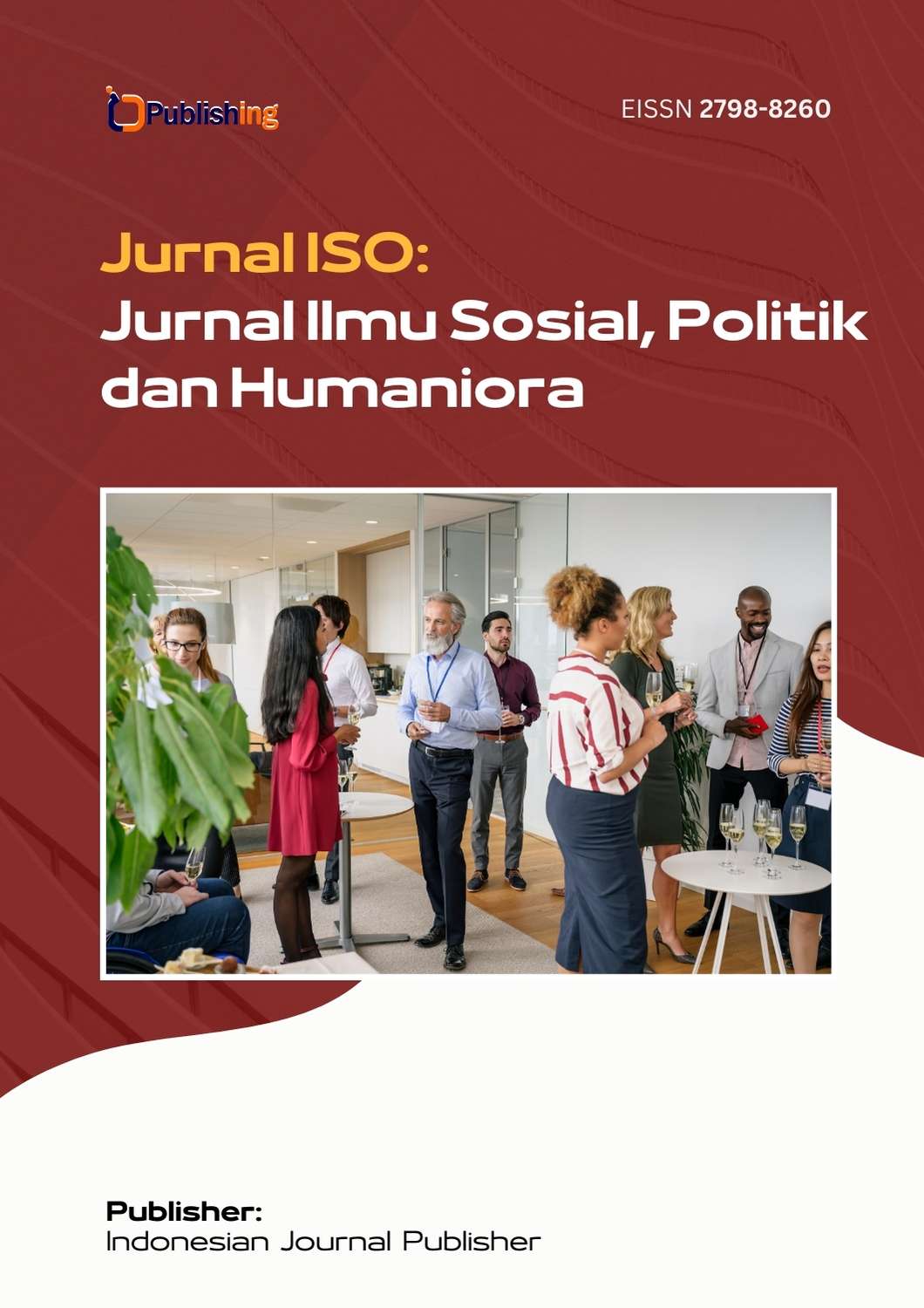Analisis Kepuasan Pengguna terhadap Aplikasi M-Paspor dalam Perspektif Implementasi E-Government di Indonesia
DOI:
https://doi.org/10.53697/iso.v5i1.2622Keywords:
M-Passport, e-Government, User Satisfaction, Digital Public Service, IS Success ModelAbstract
This study aims to analyze the level of user satisfaction with the M-Paspor application and assess the factors that influence it in the context of e-government implementation in Indonesia. This study uses a descriptive qualitative approach, with data collection through literature studies, secondary data, and analysis of user reviews on Google Play Store from January to March 2025. The analysis was conducted using a thematic approach based on the IS Success Model theory, which consists of six dimensions: system quality, information quality, service quality, usage, user satisfaction, and individual impact. The results of this study indicate that the M-Paspor application is capable of improving the efficiency of digital passport application services and significantly reducing queues at immigration offices. Features such as digital document uploads, online queue scheduling, and automatic app notifications are considered to provide convenience and speed up the service process. However, various technical challenges were also identified, such as system errors, slow app response times, and difficulties accessing features, which remain the primary complaints of users. Additionally, the app's non-intuitive navigation and the need for repeated data entry also impact user satisfaction, particularly among those less familiar with technology. This study indicates that the success of e-government through the M-Paspor app is not solely determined by technological sophistication but also by service responsiveness, ease of access, and public acceptance and satisfaction with government digital innovations. These findings are expected to contribute practically to the development of more efficient, transparent, and user-satisfaction-oriented digital public services
References
Afifa, R., Radjikan, M. A., & Hartono, S. (2023). Efektivitas pelayanan e-government dalam pembuatan paspor di Kantor Imigrasi Kelas I Khusus Surabaya Jawa Timur. Jurnal Administrasi Publik, 15(1), 45–54.
Akabar, G. D., & Frinaldi, A. (2023). Pengaruh kualitas pelayanan aplikasi M-Paspor terhadap kepuasan pengguna jasa keimigrasian pada Kantor Imigrasi Kelas II Non TPI Agam. Publicness: Journal of Public Administration Studies, 2(1), 1–10.
Alma’ruf Indrasrani, R. I., Nursanto, G. A., & Piranti, N. M. (2024). Tinjauan literatur analisis aplikasi pelayanan publik. Innovative: Journal of Social Science Research, 4(4), 8052–8074.
Cordella, A., & Tempini, N. (2015). E-government and organizational change: Reappraising the role of ICT and bureaucracy in public service delivery. Government Information Quarterly, 32(3), 279–286.
Dari, K. W., & Gea, N. L. (2024). E-Government sebagai sarana layanan publik: Analisis sistem M-Paspor pada Kantor Imigrasi Kelas I Khusus TPI Medan. Jurnal Dunia Pendidikan, 4(3), 1807–1817.
Gil-Garcia, J. R. (2012). Enacting Electronic Government Success: An Integrative Study of Government-wide Websites, Organizational Capabilities, and Institutions. Springer.
Haryanto, S. (2020). Analisis Kepuasan Pengguna Aplikasi M-Paspor Menggunakan Metode IPA. Jurnal Manajemen Teknologi, 25(4), 112–120.
Heeks, R. (2006). Implementing and managing eGovernment: An international text. SAGE Publications.
Helpiastuti, S. B., Syaifana, I., & Rohman, H. (2023). Kualitas Pelayanan M-Paspor di Kantor Imigrasi Kelas I TPI Jember. Jurnal Ilmiah Manajemen Publik Dan Kebijakan Sosial, 7(1), 15–30.
Hilbert, M. (2011). The end justifies the definition: The manifold outlooks on the digital divide and their practical usefulness for policy-making. Telecommunications Policy, 35(8), 715–736.
Janowski, T. (2015). Digital government evolution: From transformation to contextualization. Government Information Quarterly, 32(3), 221–236.
Muliawaty, L., & Hendryawan, S. (2020). Peranan e-government dalam pelayanan publik (studi kasus: Mal pelayanan publik Kabupaten Sumedang). Kebijakan: Jurnal Ilmu Administrasi, 11(2), 45–57.
OECD. (2020). Digital government in Indonesia: Strengthening the institutional and regulatory framework (OECD Digital Government Studies).
Prameswari, A., Zakaria, S., & Centia, S. (2023). Pelayanan Publik Berbasis Electronic Government Melalui Penerapan Aplikasi Mobile Paspor (M-Paspor) Di Kantor Imigrasi Kelas I TPI Bandung Tahun 2022. Jurnal Administrasi Pemerintahan (Janitra), 3(2), 256–262.
Pratama, A., & Dewi, M. (2019). Peningkatan Desain Aplikasi M-Paspor melalui User Interface yang Lebih Sederhana. Jurnal Sistem Informasi, 15(2), 78–89.
Purbo, O. W. (2020). Strategi pengembangan infrastruktur TIK untuk daerah terpencil di Indonesia. Prosiding Seminar Nasional Teknologi Informasi dan Komunikasi, 7(1), 10–17.
Rahmaini, P. (2021). Penerapan Prinsip E-Government sebagai Wujud Inovasi Pelayanan Publik di Era Modern Tahun 2021. (Journal of Social Science and Humanities), 1(1), 46–51.
Razzaq, F. (2021). Tingkat Keberhasilan Sistem Informasi Keuangan Daerah dengan menggunakan Model Delone & Mclean dan Theory of Planned Behaviour.
Riduan, M., Rahmadanita, A., & Nurrahman, A. (2023). Inovasi Pelayanan Publik Di Kantor Imigrasi Kelas II TPI Batulicin. Jurnal Media Birokrasi, 113–132.
Sari, D. (2021). Faktor-Faktor yang Mempengaruhi Kepuasan Pengguna Aplikasi M-Paspor: Studi Kasus pada Pengguna di Jakarta. Jurnal Ilmu Komputer, 22(3), 134–145.
Sari, P. D., Al Karimah, R. A., & Salsabila, S. (2023). Efektivitas aplikasi M-Paspor dalam pelayanan publik. Jurnal Ilmu Sosial dan Ilmu Politik, 12(2), 112–121.
Setiawan, R. (2022). Tantangan e-government di Indonesia. Jurnal Ilmu Administrasi Publik, 12(1), 45–58.
Setiawan, T. (2017). Analisis Usability pada Aplikasi M-Paspor di Indonesia. Jurnal Teknologi Informasi, 18(1), 45–56.
Suryani, L., & Sari, N. (2023). Implementasi aplikasi M-Paspor dalam mewujudkan digitalisasi pelayanan publik. Jurnal Transformasi Pelayanan Publik, 8(1), 20–30.
Taher, N. H., & Mansur, M. (2023). Penggunaan M-Paspor dalam pelayanan pembuatan paspor di Kantor Imigrasi Kelas I TPI Ternate. Jurnal Administrasi Negara, 11(3), 78–89.
Taher, N. H., Dai, S. L., & Mansur, M. (2024). Penggunaan M-Paspor Dalam Pelayanan Pembuatan Paspor di Kantor Imigrasi Kelas I TPI Ternate. Jurnal Penelitian Mahasiswa Pariwisata, 2(2), 175–190.
Tampubolon, E. N. (2022). Penerapan inovasi pelayanan publik berbasis aplikasi M-Paspor. Jurnal Reformasi Administrasi, 7(2), 65–74.
UNESCAP. (2021). E-government development in Asia and the Pacific. United Nations Economic and Social Commission for Asia and the Pacific.
William H. DeLone, & Ephraim R. McLean. (2003). The DeLone and McLean Model of Information Systems Success: A Ten-Year Update. Journal of Management Information Systems, 19(4), 9–30.
Downloads
Published
How to Cite
Issue
Section
License
Copyright (c) 2025 Oktavia Anggi Ramadhani, Khansa Nabilla Lutfiyah, Devita Larasati Tupen, Fadhia Chalisha Adzzahra, Fatkhuri

This work is licensed under a Creative Commons Attribution 4.0 International License.













